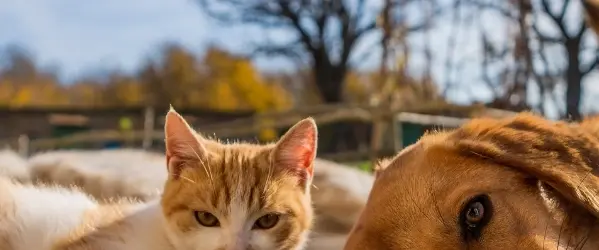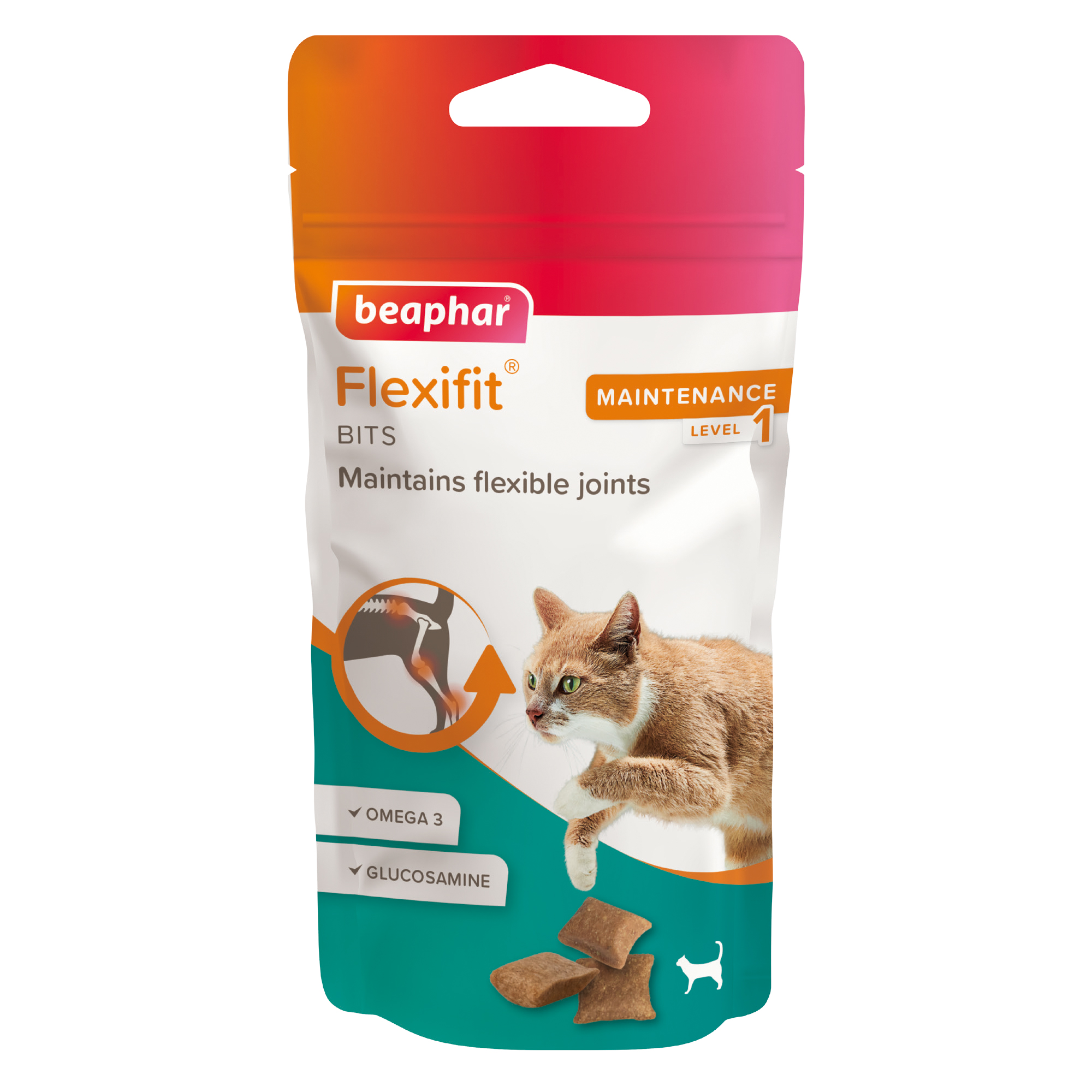Pet Joint Health Hub: Expert Tips, Supplements, and Care for Cats and Dogs
Introduction to pet joint health
Pet owners want to see their cats and dogs fit, healthy and ready to enjoy life. But just like us, as animals age parts of the body start to wear out. The primary function of a joint is to provide motion and flexibility to the skeletal frame, and to act as a shock absorber. It is these mobility and shock absorbing properties that allow our cats and dogs to play, run and move around comfortably, meaning pet joint health is directly linked to their quality of life and overall happiness.
Pet joint health is often something that is overlooked, with many owners only becoming aware of a joint problem when signs of pain, discomfort or stiffness become visible. Fortunately, there are a number of preventative joint care measures that owners can take, including knowing the signs of joint problems to look out for, and how to maintain healthy joints through supplements and lifestyle choices, to support pet joint health for as long as possible.
Understanding joints and how they work
To best understand how to support our pets’ joints, it’s helpful to know how they work and how they impact movement.
A joint consists of bones, muscles, ligaments, cartilage and synovial fluid. The bones are anchored by ligaments, which allow a certain amount of movement in specific directions. Ligaments also bind the bone ends together to prevent dislocation and excessive movement that could result in breakages.
Tough fibrous tissues enclose the area where the two bone ends meet. This is the joint capsule. Many joints are surrounded by a joint capsule which contains the synovial fluid.
The ends of the bones are covered by cartilage, which creates a smooth surface to help the joint move easily, and to absorb any impact as body weight is placed on it.
Cartilage and synovial fluid both play an important role in reducing friction and providing smooth movement of the joints.
There are three types of joints:
• Synovial joints - these are the most common and they provide free movement between the bones they link. Most joints found in limbs such as knees, elbows and wrists are synovial joints.
• Cartilaginous joints - these joints are united by cartilage and allow some movement. The joints formed between each vertebra in the spine are an example of cartilaginous joints.
• Fibrous joints - these joints are held closely together by fibrous tissue and have minimal movement. In most cases movement of these joints depends on the length of fibres uniting the bones. The plates of the skull are examples of fibrous joints.
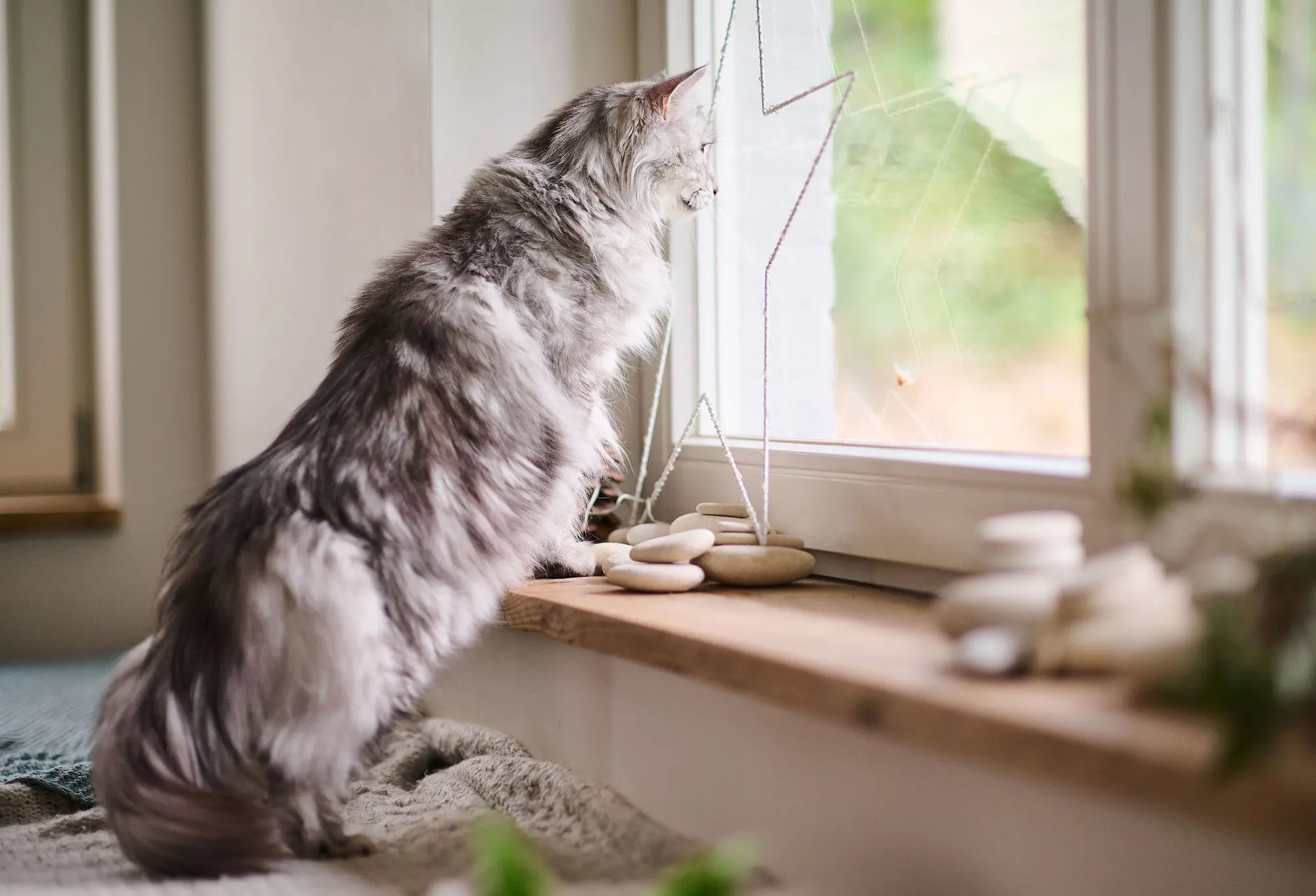
What causes joint pain, and how does it affect pet joint health?
Just like humans, pets can experience joint pain for several reasons. Joint pain in cats and dogs is usually caused by erosion or degeneration of cartilage in the joints (the spongy covering on the end of the bones), or a reduction in synovial fluid (the natural lubricating fluid separating the two bones of a joint). Together, these function as the body’s natural shock absorbers. A reduction in either can be caused by chronic, repetitive strain, or simply occur because of the natural ageing process.
As the protective cartilage that covers the joint surfaces wears away, exposed bone can become damaged causing joint pain. In an attempt to repair the damaged joint, bony outgrowths can develop which exacerbates the problem.
Fluid pressure within the joint can also increase pain. It’s a common misconception that joint pain and stiffness in bad weather is caused by the cold or damp which swells the joint; in fact, it’s the drop in atmospheric pressure which causes this stiffness and discomfort.
As joint degeneration advances, the surrounding muscles, ligaments and tendons also become weaker and can be painful.
Cats and dogs tend to avoid putting pressure on the affected area when suffering from joint pain which can lead to muscle wastage. Muscle tone is lost, and the joint becomes less stable, resulting in abnormal movement, creating additional wear and tear. If left unchecked, this cycle of pain and joint decay will worsen, resulting in a lack of mobility.
Common joint issues in cats and dogs
Joint disease is a common problem in cats and dogs, especially with their increased longevity. Most commonly, joint problems occur due to ageing, but can also be because of illness or accidental damage.
Common joint issues that affect pet joint health are:
Osteoarthritis: a degenerative condition in which the normal cartilage cushion in the joint breaks down. This results in the adjacent bones rubbing together, causing pain, decreased joint movement, and sometimes the formation of bone spurs and other changes around the joint. Although osteoarthritis is a progressive disease, it can be actively managed so that the course of the disease is slowed, and the remaining joint function is preserved. Osteoarthritis is commonly recognised in dogs – 40% of dogs over 4 years old show signs of arthritis on x-ray1. It is now being diagnosed quite frequently in cats, especially senior and geriatric cats – 61% of cats over 6 years old had signs of arthritis on x-ray2, and this increases to 90% for cats over 12 years3.
Hip dysplasia: the abnormal development of the hip joint. Progressive lameness, stiffness and pain often arise in the hind legs with this disease. It is most common in larger dog breeds, especially German Shepherds and Golden Retrievers, although all dogs can be affected. Hip dysplasia is an inherited condition, and surgery is often required to treat it. However, maintaining correct body weight, adequate exercise and offering a joint supplement can help to slow down or prevent its progression.
Carpal hyperextension: injuries cause a breakdown of the ligaments that support the back of the carpal (wrist) joint. The wrist may collapse, and the foreleg begins to rest closer to the floor rather than in the normal position. Carpel hyperextension is often caused by landing on the front legs after jumping from a significant height.
Coxofemoral luxation: the dislocation of the hip. The head of the femur (thigh bone) comes out of the socket of the pelvis. This means that no weight can be placed on the affected limb.
Cruciate ligament damage and/or rupture: a common joint problem. This ligament is located within the knee joint and helps stabilise the position of the femur as it comes to rest on the tibia. Acute traumatic tearing of this ligament can occur, or the ligament may slowly degenerate and weaken until tearing occurs.
Bacterial infection: when this occurs within the joint it can lead to severe erosion of the joint surface and may progress to illness. This is known as septic arthritis.
Signs of Joint Problems
Common signs of joint problems in cats and dogs include:
- Pain symptoms
- Joint effusion (swollen joints)
- Crepitation (crunching sounds coming from joints)
- Signs of stiffness when walking or trying to get up
- Inactivity
- Unwillingness to jump, climb stairs or exercise
- Inappropriate urination
- Grooming less, leading to poor coat condition and matted hair
- Muscle atrophy (wastage)
- Changes in behaviour
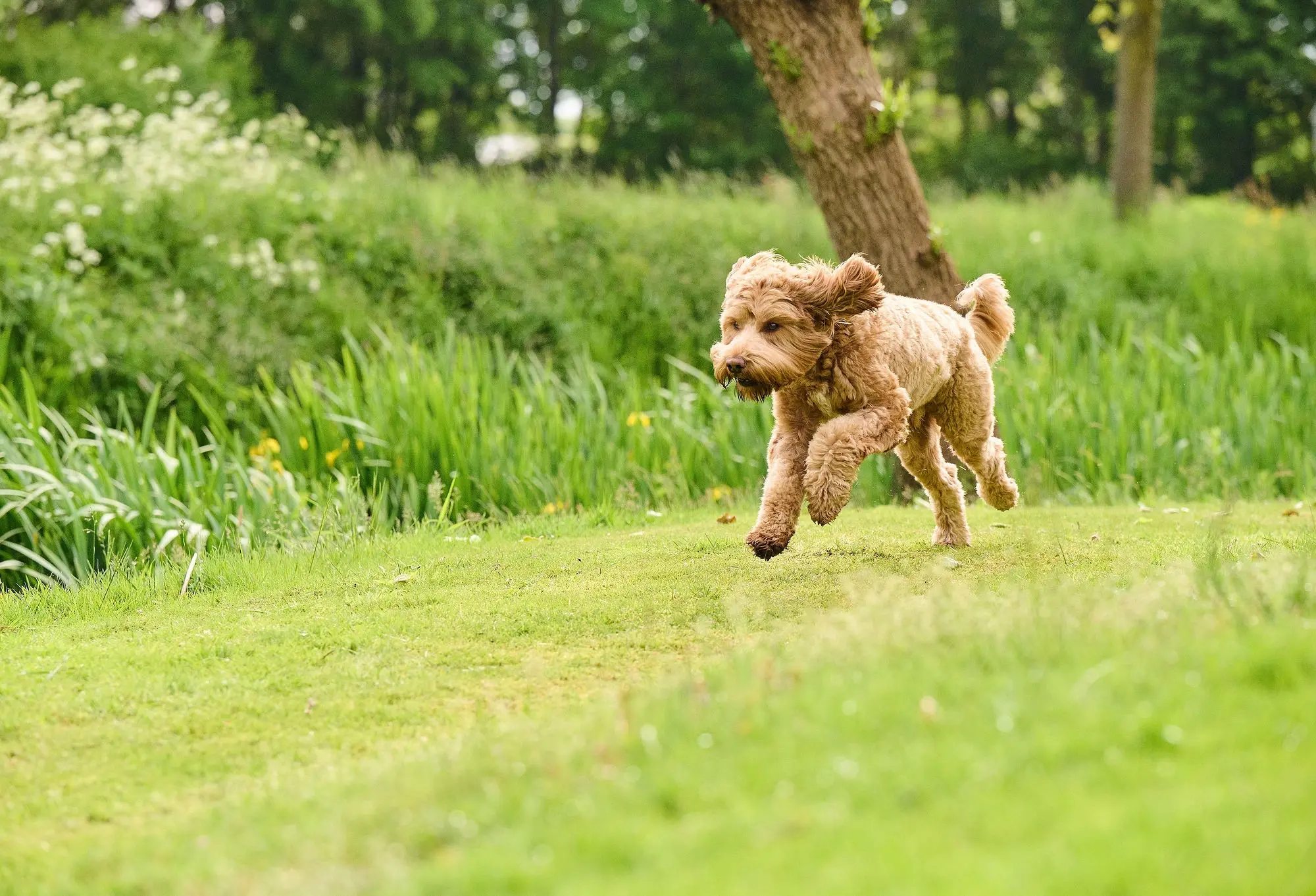
Preventative joint care for pets
By the time a joint problem is diagnosed, a pet may have been in pain for quite some time. Some pets may even have developed coping strategies to enable them to deal with the discomfort.
This can range from being unwilling to climb stairs or jump onto a favourite chair, to developing a new way of walking or a normally placid cat or dog becoming withdrawn, irritable or aggressive. Immobility or not using limbs for a prolonged period can result in muscle wastage and longer-term damage, leading to a further decrease in mobility.
Alongside knowing the signs of joint problems to look out for, the best ways to support pet joint health and prevent problems occurring are:
- Maintaining a healthy weight: this reduces the amount of strain put on the joints, allowing cats and dogs keep healthy, active and pain-free. Studies have shown that dogs that were above average weight had over 2.3 times increased risk of arthritis4. Maintaining a healthy body weight has addition benefits, including helping to prevent heart disease and other weight-related health problems.
- Regular exercise: moderate daily exercise is needed to keep joints and bones strong and healthy. But it’s important not to overdo it. Some people believe that pets should be given 5 minutes of exercise per month of age, but there isn’t any scientific basis for this. In fact, studies have shown that exercise-restricted puppies may have a higher incidence of hip dysplasia5. The best way to keep your pet healthy and active is to take exercise at your pet’s pace – playing fetch solidly for twenty minutes is very different to playing fetch but allowing your dog to stop for sniff breaks or a rest when they need.
- Regular vet checks: visiting the vet is particularly important for older pets, but it’s a good idea for all pets to have a check-up once or twice a year. This allows owners to become aware of any joint problems or other health concerns early and make any lifestyle changes needed. This is especially important for owners of breeds that are predisposed to joint problems, such as German Shepherds or Golden Retrievers.
- Good quality joint supplements: joint supplements aren’t just for pets with joint problems. Early supplementation can help support healthy joint development and continue to help maintain joint health throughout their lives. Keeping joints healthy and strong will also decrease the chance of serious injury from minor incidents. But, not all joint supplements are created equally so it’s important to check the ingredients to ensure to ensure you’re using a good quality joint supplement. Ingredients to look out for include Undenatured Type II Collagen (UC-II®), Omega 3, Glucosamine, and Vitamins C and E, these can be found in the range of Beaphar Flexifit® products.
Joint-friendly home environment: it sounds odd, but making sure your home is joint-friendly can be beneficial for pets. Things like ensuring they don’t need to jump as far to get down from cat towers, providing a place for joints to rest a recuperate with good quality bedding, and creating non-slip surfaces for pets to walk on, are all things you can do to help support pets and prevent joint injuries occurring. For pets that may be older or already suffering with joint issues, making changes such as ramps to get on and off beds, and even raising your pet’s bed off the floor so they don’t have to struggle to settle down, can be a great help. With joints playing such a vital role in cats’ and dogs’ ability to move freely, taking steps now to support your pet’s joint health will go a long way to improving their overall quality of life.
Featured articles: learn more about pet joint health
- Preventing Hip Issues in Dogs – Tips for early joint care in puppies and large breeds.
- Canine Joint Disease: A Guide for Dog Owners – Understanding and managing joint issues in dogs.
- Top Tips for Managing Arthritis in Dogs – Choosing the best joint supplements for dogs.
- Feline Flexibility: How to Support Your Cat's Joint Health for Life – Tips for keeping cats agile and healthy.
- Cats and Arthritis: What to Look for and How to Help – Recognising and managing arthritis in cats.
- 5 signs your dog may have a joint problem – signs to look out for and what to do next
- Dog Obesity and Joint Health – an in-depth look at how weight directly affects joint health in dogs
- Exercise to do with your dog – dogs love walkies, but what other exercise options are there?
Joint Product Recommendations
What are the best joint supplements for pets?
There are many joint supplements available for cats and dogs, making it difficult to know which one to choose for your pet. Ultimately, the best joint supplement for pets is the one that best matches their joint care needs.
Beaphar Flexifit® is a range of joint supplements for cats and dogs of all life stages and breeds. The joint care products are divided into easy-to-understand levels, each with a multi-action formula tailored to the pet’s degree of mobility and need.
Whether you’re looking to maintain your pet’s current joint health or offer preventative joint care for your pet, Beaphar Flexifit® has a joint care product to suit.
Level 1 – Maintenance Joint Care
Younger cats and dogs tend to be very energetic, and their joints are still developing. To help safeguard pet joint health as they grow, it is important to ensure they have the right nutrients to maintain healthy joint function and development.
Level 1 Beaphar Flexifit® products for cats and dogs help maintain flexibility, and contain Glucosamine and Omega 3 fatty acids, both of which are well-known to support joint health.
Level 2 – Advanced Joint Care
As pets move into adulthood, they may require additional joint support. Owners may notice the first signs of joint stiffness or reduced mobility in their cats and dogs. At this stage they will need additional support to help soothe stiff joints and maintain joint mobility.
Level 2 Beaphar Flexifit® Paste for Cats and Dogs is a tasty, easy-to-give joint paste enriched with Glucosamine, Omega 3, and Vitamin E and C that can easily be mixed into food or given directly from the tube.
Level 3 – Optimum Joint Care
Joint stiffness is very common (but not exclusive) to senior pets. Certain breeds of dogs and those with high activity levels are also susceptible to joint problems. A different approach is needed to soothe, comfort and support the joint structure, and help pets to stay active and continue to experience the joy of motion.
Level 3 Beaphar Flexifit® Chews for Dogs contain 40mg of Undenatured Type-II Collagen (UC-II®). The benefits of UC-II® allow it activate the immune system to help soothe, comfort and support joint structure6. One small daily dose of 40mg has been shown to mitigate exercise-induced pain, inflammation and cartilage degeneration in healthy dogs7. Just one chew a day is all that is needed to support your dog’s joint health, regardless of age, weight or breed.
Still unsure which Beaphar Flexifit® product you need? Answer a few quick questions and we’ll recommend one for you: Take the quiz
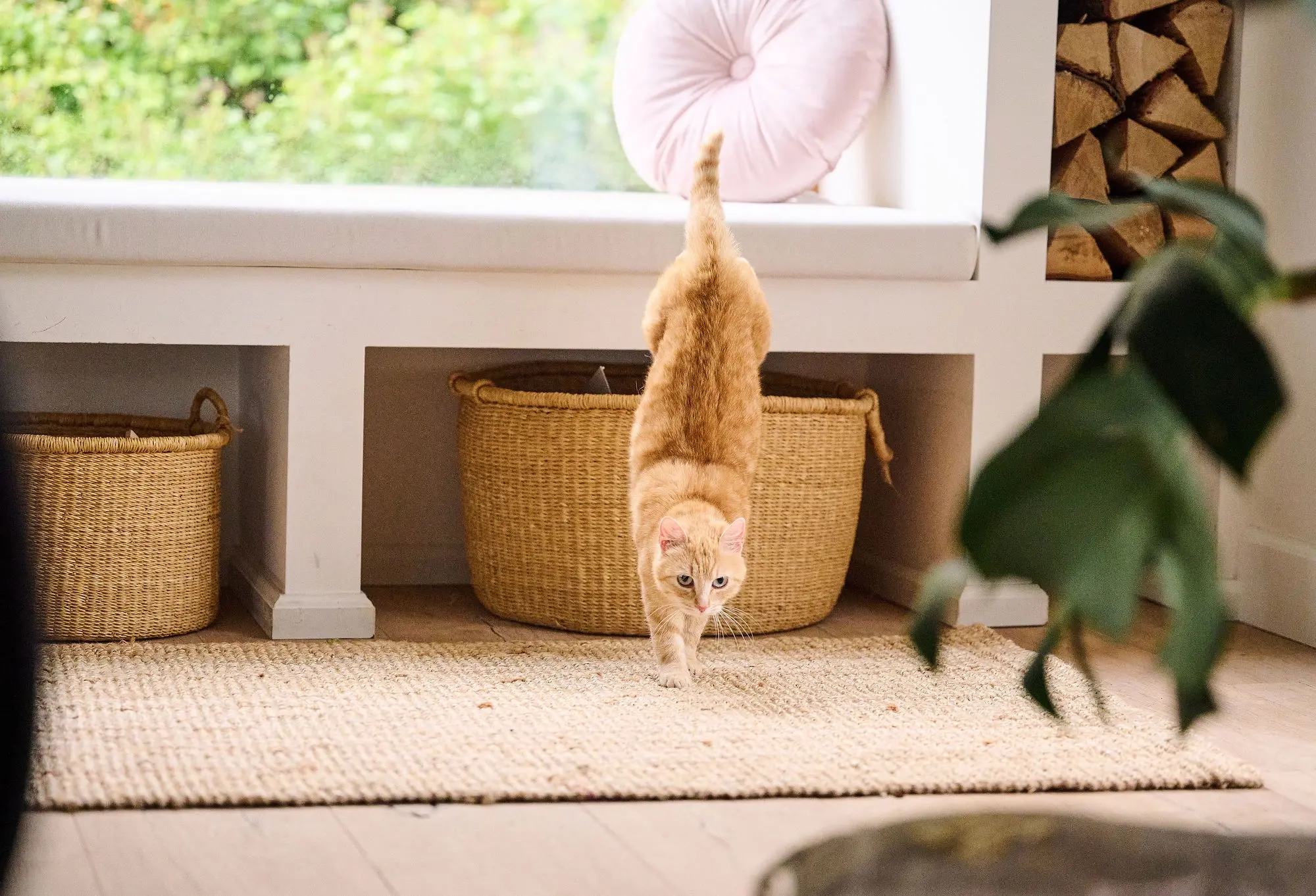
Joint FAQs
Can I give joint supplements to my puppy?
Yes, you can give joint supplements to puppies. Young dogs and puppies are super energetic and still growing. Offering them a joint care supplement from a young age is a great way to support healthy joint development. Joint supplements for puppies are even more important if they are a breed prone to joint problems, such as German Shepherds and Golden Retrievers.
How do I know if my cat has arthritis?
It can be difficult to recognise the signs of arthritis or other joint problems in cats. Due to their small size and natural agility, cats tend to be able to tolerate joint issues for an extended period with few outward signs. Cats also generally resent being handled or manipulated during clinical examinations, so it can be difficult to determine if your cat is suffering from joint pain or just doesn’t want to be touched.
Whereas lameness is the most common clinical sign of joint disease in dogs, cats tend to hide their symptoms, making it harder to spot joint problems. Signs of arthritis in cats may be:
- unwillingness to jump
- being less playful
- grooming less
- limping while walking
- stiffness when getting up
Cats suffering from osteoarthritis are often bilaterally affected (both elbows or hips are affected at the same time). The cat will overcompensate appearing to walk normally, making it even harder to spot. Visit your vet if you’re concerned about joint issues in your cat.
Further information can be found in our article Cats and Arthritis: What to Look for and How to Help
What’s the best joint supplement for large breed dogs?
Large breed dogs tend to be more prone to joint problems, so starting them with a joint supplement early is going to be highly beneficial for their joint health. For younger large breed dogs, we’d recommend starting with Beaphar Flexifit® Joint Paste. For older large breed dogs, or those showing signs of stiffness, we’d recommend the Beaphar Flexifit® Chews, which contain UC-II®.
Our joint care quiz asks more specific questions about your pet’s mobility, and may offer more tailored advice: Take Quiz
References
- Wright, A. et al. (2022) Identification of canine osteoarthritis using an owner-reported questionnaire and treatment monitoring using functional mobility tests. J Small Anim Pract 63, 609-618
- Loder, R.T. & Todhunter, R.J. (2018) Demographics of hip dysplasia in the Maine Coon cat. J Feline Med Surg. 20(4):302-307
- Keller, G.G. et al. (1999) Hip dysplasia: a feline population study. Vet Radiol Ultrasound. 1999;40(5):460-464
- Anderson K.L., O’Neill, D.G., Brodbelt, D.C., Church, D.B., Meeson, R.L., Sargan, D., et al. (2018) Prevalence, duration and risk factors for appendicular osteoarthritis in a UK dog population under primary veterinary care. Scientific Reports 8(1):5641
- Krontveit, R.I. et al. (2012) Housing and exercise-related risk factors associated with the development of hip dysplasia in dogs as determined be radiographic evaluation in a prospective cohort of Newfoundlands, Labrador Retrievers, Leonbergers, and Irish Wolfhounds in Norway. Am J Vet Res. 73(6):838-46
- Gencoglu H, Orhan C, Sahin E, Sahin K (2020) Undenatured Type II Collagen (UC-II) in Joint Health and Disease: A Review on the Current Knowledge of Companion Animals, Animals 10, 697 http://dx.doi.org/10.3390/ani10040697.
- Gupta, R.C., et al. (2012). Comparative therapeutic efficacy and safety of type-II collagen (uc-II), glucosamine and chondroitin in arthritic dogs: pain evaluation by ground force plate. J Anim Physiol Anim Nutr, 96: 770-777.


